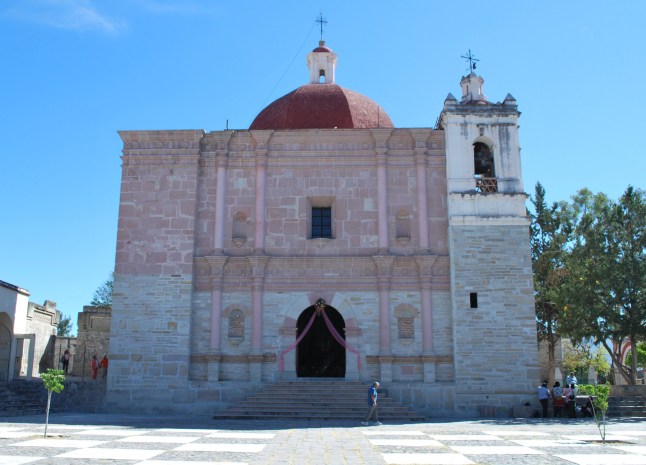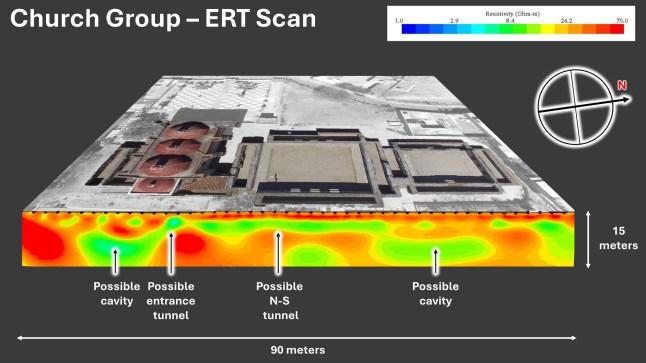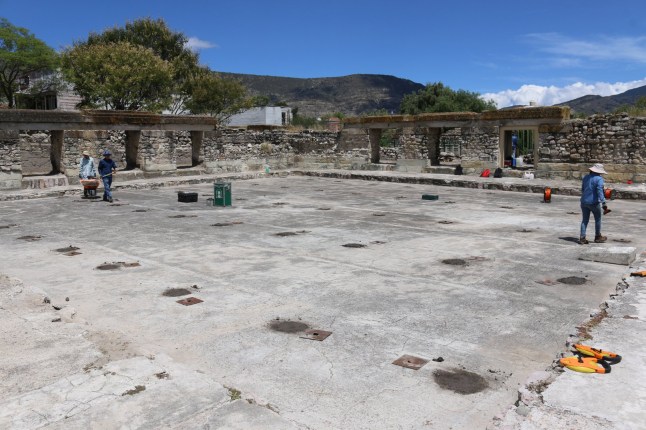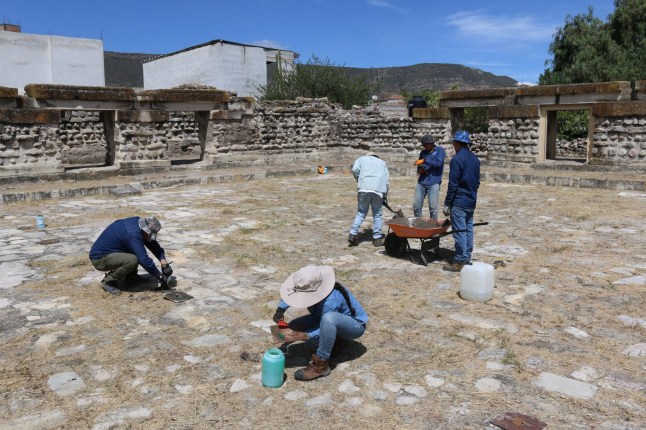
Mysterious tunnels and chambers described as the ‘entrance to the underworld’ have been found below a church in Mexico dating back to the 16th century.
Archaeologists have made a discovery that is like something out of an Indian Jones film with tunnels filled with gold, jewels – and bodies.
Mitla, meaning place of the dead, was a city in Mexico linked to the Zapotec god of death known as Pitao Bezelao.
When the Spanish conquistadors arrived in the 1500s, they built a church – called San Pablo Apostol – on the site of its most important temple in a display of power.
Although a priest once wrote that ‘the back door of hell’ existed under Mitla’s buildings and streets, previous excavations could not support this claim.
However, archaeologists have now discovered a network of ancient chambers and tunnels underneath the city using radar techniques.
‘Gruesome room’ with bodies of kings’ enemies
Experts investigated five different groups of ruins – the church group, the arroyo group, the adobe group, the south group, and the group of the columns.

Marco Vigato, who founded the company in charge of the search, said: ‘Some of the tunnels and chambers extend to a considerable depth, in excess of 15 metres.
‘In the case of the south group, they’re up to 30 metres deep – this is as far as the instruments can penetrate.
‘One chamber under the Church of San Pablo Apostol measures approximately 15 metres long by 10 metres wide.
‘It is possible that the tunnels, particularly those under the church group, extend further to the north, east and south.
‘Possibly they connect to other geophysical anomalies identified under the other groups.’

Francisco de Burgoa, a historian who lived not long after the church’s construction, says the Zapotec kings were buried with ‘feathers, jewels, golden necklaces, and precious stones’, while their hands were holding ‘a shield in the left hand and a javelin in the right, just as they used them in war’.
According to de Burgoa, the final chamber consists of ‘a dark and gruesome room’ where ‘they threw the bodies of the victims of the great lords and chieftains who had fallen in battle’.
Mr Vigato said: ‘The Zapotecs believed the caves and the subterranean labyrinth under Mitla to be an entrance to the underworld, or Lyobaa.
‘For this reason, Mitla was the centre of the cult of Pitao Bezelao, the Zapotec god of death and the underworld, and was for centuries the cemetery of the Zapotec kings and high priests.’

According to Mr Vigato, the location of the church, above a former temple, was by no means a coincidence.
‘The church was built deliberately on top of the most important Zapotec temple at Mitla,’ he continued.
‘It was a way of converting a pre-existing religious site and symbolising the triumph of the new faith.
‘A significant portion of the ruins were incorporated into the foundations of the church, which was built with stones stripped from the ancient buildings.’
The age of these tunnels is still unknown, but the Zapotec civilisation dates as far back as 700 BC.
Speaking about the area, Mr Vigato said: ‘Natural caves in the area of Mitla have been occupied and partially modified by humans for thousands of years.
More Trending
‘The earliest evidence of crop domestication in the area of Mitla dates back almost 10,000 years.
‘There is no indication at the moment as to the possible age of the tunnels under the church or the other groups of structures at Mitla. They may have been created by the Zapotecs, or they could be much older.’
Although the scans conducted at the site indicate a labyrinth of tunnels and cavities, these discoveries still need to be reviewed by archeologists using specific methods. Artefacts of historical significance may have been down there for thousands of years.
It comes after another significant discovery in Mexico as a PhD student accidentally found a hidden ancient city in the Yucatan peninsula.
Get in touch with our news team by emailing us at webnews@metro.co.uk.
For more stories like this, check our news page.
MORE: Assassins storm beach and execute man before escaping on jet skis













